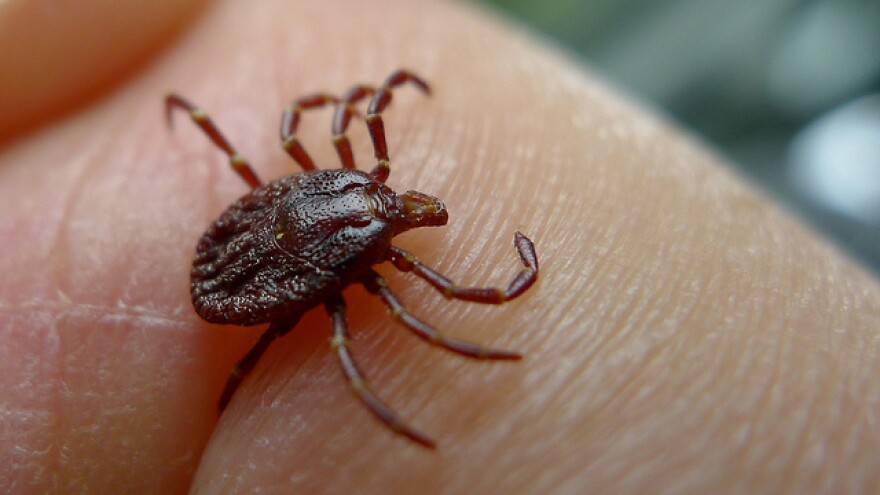The threat from tick-borne diseases like Lyme disease is at an all time high in New York state. At a recent forum sponsored by the New York State Department of Health and state Sen. John DeFrancisco (R-Syracuse), experts hope more information about prevention of the bacterial disease can reduce the number of people that are infected.
In order to avoid Lyme disease, it’s important to know how it is spread. By now, most people know a bite from the deer tick is the culprit. Professor Brian Leydet of SUNY ESF says central New York has the three ingredients that make it easy for those ticks to proliferate.
"We have deer, we have mice, we have the weather, so we have the tick,” Leydet said.
The bacteria start out in the mice. Once they are infected, they have Lyme disease for life. And so when a tick feeds on a mouse, they become carriers. Where do the deer come in? Leydet says ticks love to feed on big mammals, and deer fit the bill.
"Once an adult tick feeds on a deer, it lays how many eggs? Two to three thousand eggs. So you can imagine one tick on one deer, that’s 3,000 baby ticks in your yard.”

Leydet says there is more Lyme disease in central New York now, simply because there are more ticks that are spreading the disease. So step one to avoid Lyme, says Leydet, avoid ticks. He’s studied ticks for a decade and says he has never been bitten.
"When I go outdoors, I am constantly looking down at my legs. Because ticks are not falling from trees. Ticks are not jumping from branches. Ticks are coming by, brushing up on your shoe, your pant leg, your sock. and crawling up. When you find them in your hair, they’ve had all day to crawl up there. So they’ve gotten there by ‘questing,’ they call it,” said Leydet. So I’m constantly looking down, and when I see a little black dot moving, I take it and throw it away.”
There are also insecticides like permethrin.
"You don’t spray it directly on yourself like other deer-based sprays. But you can spray it on your hiking boots, you can spray it on your pant legs, or socks. Permethrin is nice because it lasts through a couple of laundry cycles, so you can wash your socks. It kills the tick when it attaches.”
There are also landscaping tips that can help, like creating a border between wooded areas favored by ticks and your lawn.
If you find a tick crawling on your skin, there’s no way for the bacteria to spread. It’s when those ticks attach, there’s trouble.
Infectious control specialist Dr. Christopher Polino from Upstate Medical Center says patients with embedded ticks are immediately prescribed antibiotics. And if the tick is unnoticed, it’s easy to diagnose if there’s a bullseye rash on the skin. However, if that’s not present, symptoms can mimic many other things.
“You start having flu-like symptoms -- aches, pains, the headaches, things of that nature. Fevers, as well. Some people can develop cardiac or heart problems,” Polino said.

And if it isn’t identified or treated early on, Lyme disease can become a chronic life-changing illness. That’s what happened to Syracuse teen Audrey Mitchell.
“Standing here before you today, I probably don’t look sick. But even as I’m standing here talking to you, I have a horrible headache, a fever, intense joint and muscle pain, dizziness, and my skin is so painful, that my clothes physically hurt my body,” Mitchell said.
Polino says there’s disagreement over treatment for chronic Lyme, noting a dearth of research into the issue. He also says a vaccine is in the pipeline. But for now, the best bet to control the spread of the disease -- stop that initial encounter with a tick.
“We really need to focus on tick checks, using deer and permethrin-based products to stop ticks from actually causing the infection, because this vaccine product is not going to be ready for several years at the earliest.”







